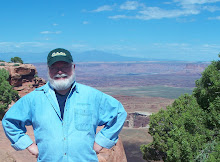Earlier this year, a friend at the Portsmouth Public Library in Ohio, alerted me to a call for submissions of short stories about southern Ohio from the Shawnee State University English Department. I submitted two manuscripts and was delighted when I was notified in late October that one would be used. The committee at Shawnee State University selected "The Friday Night Dance," which was originally published in my memoir titled "On Harrisonville Avenue."
I re-purposed "Friday Night" for submission, taking out references to earlier parts of "Harrisonville" and clarifying other points to make the story stand alone and make sense. I was also careful to retain the sketch of a naive and inexperienced 13 year old boy's first venture into being on his own at night, escorting a girl to her home, and receiving his first french kiss. When finished, the manuscript was 4500 words and twenty pages.
In revising "Friday Night," I was reminded of what a wonderful time it was to grow up in a town where there was Steel Mill full-employment, neighborhoods with alleys, kids your age, and shared parental standards where any adult who witnessed a kid doing something offensive could call that offender out on the spot (and then call the kid's parents to report what had happened).
Yes, there were more bars than churches, yes there was a den of iniquity that every boy was told "don't go in there" (the Tiger's Den Pool Hall), yes, you had to have your clothes taken off the line when the blast furnace was tapped at 4:00 p.m., and...yes, there was a town drunk who annoyed everyone with his too loud, off-key singing just as you were trying to go to sleep at night -- but there were more than a fair share of positives as well: Little League baseball fields, a lake, a football stadium, tennis courts, caring teachers and civic minded citizens who elected officials with clear principles.
It was a different time.
New Release Spotlight: Dr. Benjamin Long
5 days ago









